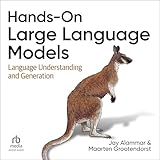
TL;DR: Generative Adversarial Networks (GANs), Variational Autoencoders (VAEs), and Diffusion Models are three prominent deep generative models, each with distinct features. GANs are known for high-fidelity samples but can suffer from low diversity and training difficulties. VAEs provide high diversity but often result in low-fidelity outputs due to blurring. Diffusion Models stand out for generating high-fidelity and diverse samples, albeit with slower processing times. Understanding these differences can guide researchers and practitioners in selecting the best model for their specific use case, whether it’s for tasks involving unstructured data or applications requiring specific fidelity and diversity levels. In this blog we explore the differences in VAE vs. GAN vs. diffusion models.
Disclaimer: This post has been created automatically using generative AI. Including DALL-E, Gemini, OpenAI and others. Please take its contents with a grain of salt. For feedback on how we can improve, please email us
Introduction
Deep generative models have become essential tools in artificial intelligence, revolutionizing applications in image and video synthesis, natural language processing, and beyond. As deep learning technology progresses, three main types of generative models have emerged at the forefront: Generative Adversarial Networks (GANs), Variational Autoencoders (VAEs), and Diffusion Models. Each model offers unique benefits and poses specific challenges, making it crucial to understand their nuances when choosing the right tool for a given project.
Generative Adversarial Networks (GANs)
GANs are widely known for their ability to generate high-fidelity data. They operate with two neural networks: a generator and a discriminator. The generator creates data that mimics real samples, while the discriminator evaluates whether the data is real or generated. This adversarial setup helps GANs produce remarkably realistic outputs. However, training GANs can be tricky due to issues like mode collapse, where the generator produces a limited variety of samples, and the delicate balance required between the two networks.
Variational Autoencoders (VAEs)
VAEs use an encoder-decoder architecture, where the encoder translates input data into a latent space, capturing its distribution, and the decoder reconstructs the input from this representation. This setup promotes high diversity in the generated samples, as the model is trained to represent the entire data distribution. Despite this advantage, VAEs often produce blurry images due to their pixel-based loss functions and the inherent averaging in the latent space.
Diffusion Models
Diffusion Models approach data generation by incrementally adding and then removing noise from data. The forward diffusion process noisifies the data step-by-step until it becomes indistinguishable from noise. The reverse process aims to recover the original data by gradually removing this noise. This method allows Diffusion Models to generate high-fidelity and diverse outputs. However, the process is computationally heavy, requiring many iterations, making it slower compared to GANs and VAEs.
Key Comparisons
Choosing between GANs, VAEs, and Diffusion Models requires careful consideration of each model’s strengths and weaknesses. GANs excel in generating high-quality images but can be challenging to train. VAEs provide a simpler training process and ensure broader data coverage, making them suitable for applications requiring diversity. Diffusion Models, while slower, offer a balanced approach where both fidelity and diversity are essential.
Application Considerations
The application dictates the choice of generative model. For tasks demanding high-quality imagery, GANs might be the best fit despite their training complexity. For applications where diversity is crucial, VAEs offer a straightforward solution. Diffusion Models stand out in scenarios where both high fidelity and diversity are important, and computational resources are available.
Future Developments
As the field of generative models evolves, ongoing research promises to address current challenges, enhancing AI’s capacity to generate realistic and useful data. Innovations in model architecture and training techniques are expected to further optimize the balance between fidelity, diversity, and computational efficiency.
Conclusion
In the realm of deep generative models, understanding the trade-offs between GANs, VAEs, and Diffusion Models is vital. Each model brings unique strengths and challenges, making them suitable for different applications. By recognizing these distinctions, researchers and practitioners can make informed decisions to leverage the full potential of AI in their respective fields. As advancements continue, these models will only become more robust, further expanding their applications and effectiveness in diverse domains.
Discover the full story originally published on Towards AI.
Join us on this incredible generative AI journey and be a part of the revolution. Stay tuned for updates and insights on generative AI by following us on X or LinkedIn.





